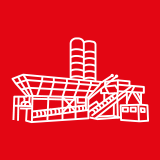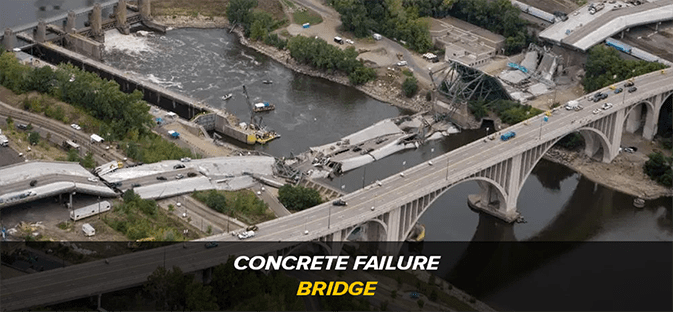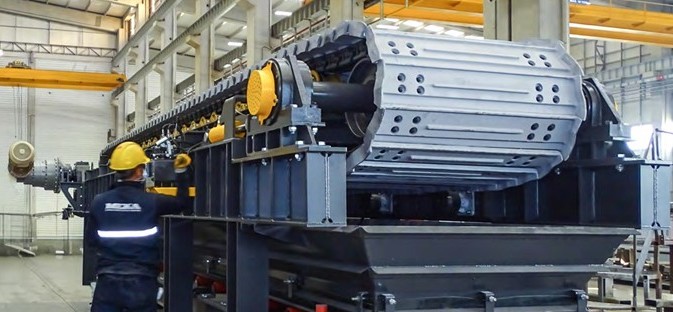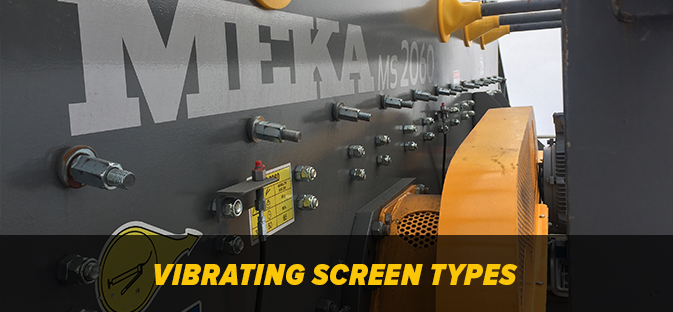Design Optimisation In Crushing-Screening Equipments By The Examinatıon Of Particle Dynamics

Due to the growth in population and renewal of cities and of human settlements; an increasing need for social facilities along with housing structures occurs that brings the construction activities at an increasing development pace globaly. Following this trend, the need for mines and construction raw materials such as concrete, cement, asphalt, ballast also expands to higher levels. In order to meet this need both in quality and quantity and also to recycle the debris of old buildings in renewal projects; the use of crushing-screening plants and related equipment becomes crucial.
In the mining sector; ‘the correct application of size reduction’ being the first phase of mineral processing, has an increasingly important role in crushing-screening technologies. During the mineral processing, aggregates and ores go through a series of enrichment processes such as crushing, grinding, classification, washing, and dewatering before they become suitable for use as a final product.
As a result to improve the quality of the outcome of these applications, it is very important to be able to calculate the forces acting on particles and the stresses they create on equipments.If these calculations succeed in numerically analysing the realistic behavior of particles in contact with the equipment used; it becomes possible to optimize the performance of such machines and equipments while reducing the design and operation costs in large-scale processes in the industry.
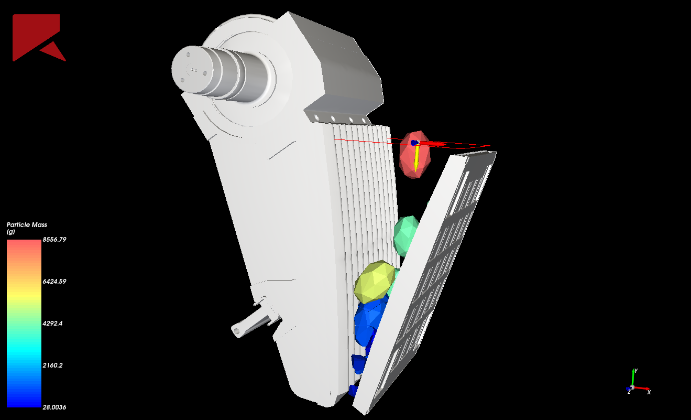
*The crusher equipment specific reviews on the fracture behavior of the ores has enabled the evaluation of the forces generated on the crusher equipment during crushing and the size distribution after crushing.
In accordance, the Discrete Element Method(DEM), developed by Cundall and Strack4 (1971), reveals the interaction between particles and boundaries to calculate the behavior of solid particles.DEM analysis plays a critical role in gaining insight into design-oriented processes. MEKA A.S. With the simulation studies carried out by the R&D Center engineers using the Rocky DEM program reaches below listed outcomes.
Also as a result of these simulation studies; wear predicitons of the equipments under heavy load is able to be calculated as well as power energy and efficiency values.This gives acess to solutions for optimum performance.
*After the crushing process, to clasify output product by size, Meka studies different screens in its product range under various parameter conditions such as frequency, amplitude, vibration trajectory and operating slope.
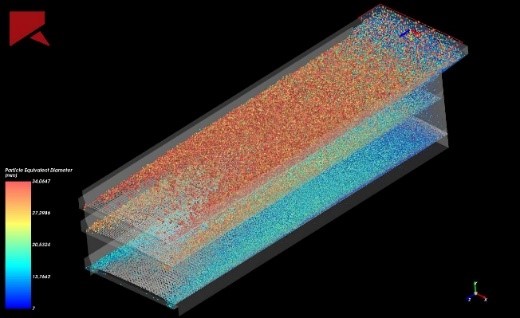
This study prevents common operational problems differing from blockage, accumulation, improper grain and size distribution causing abrupt stops.
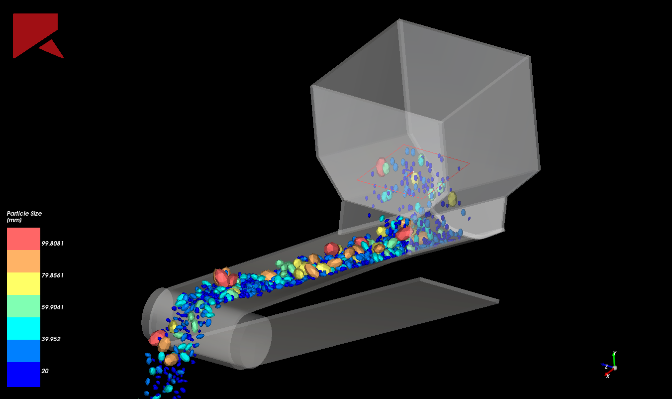
A problem arise from accumulation of the metarial causing blockages , uneven transmission and wear of the grooves and linings.This problem is common during the bulk metarial transfer in between conveyor belts and on the grooves used at the outlet of the screens and crushers also on the transfer shutes.
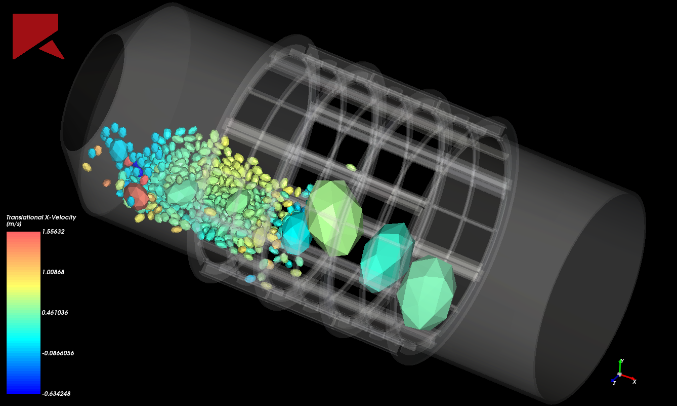
Analysing the behavior of metarial during the transfer over conveyor belts allows us to prevent loss of product valume during loading and unloading.This way we reach design solution proposals to ensure the efficiency of metarial handling process.
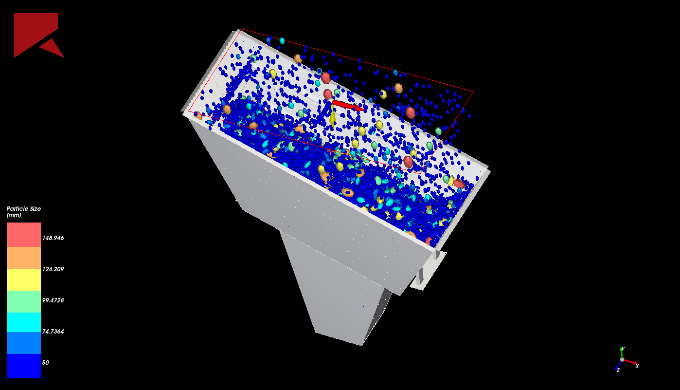
In order to prevent these problems, the flow control of the material is performed; increasing the equipment life and reaching the optimum conditions. In addition, the efficiency of these feeders has been optimized by examining the flow characteristics, particle movement, residence time on the feeder and the effects of particle velocity, which must be exhibited in order to feed the bulk material to the crusher or other equipment at an equal speed.
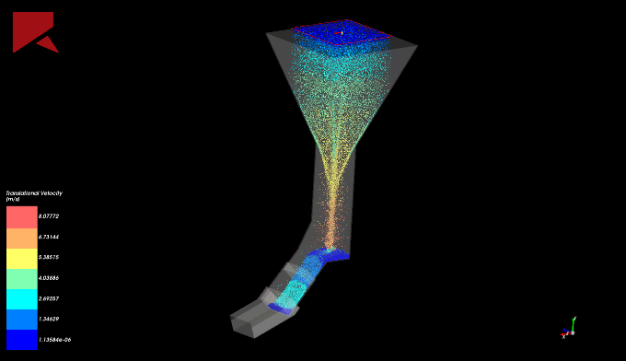
*To protect high capacities, Apron and Wobbler feeders are reached to work as a preventive screen enabling the blockage of wet and sticky metarial in screens and feeders.This makes them indispensable equipment of the crushing-screening process while the raw metarial has high humidity and sticky.
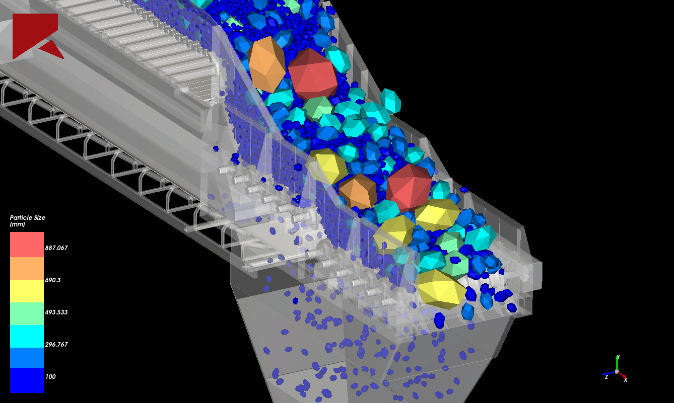
*To reach prefered efficiency values at aggrega washing operations, the grip angle that meets both desired power and capacity levels is being designed for different bucket types within Meka brand bucket wheels.

Moreover , in order to obtain optimum capacity and power values at once, the parameters affecting the spiral design were examined and improvements were made. In this way, desired results are achieved in terms of performance and stability.
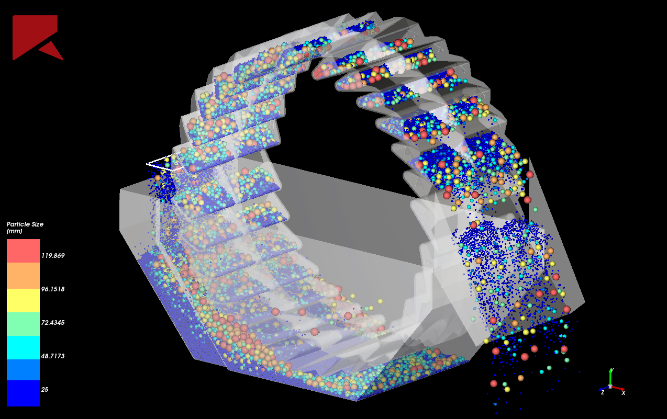
Flow regime and metarial behavior in contact points during the flow of the bulk aggregates and ores varies according to the metarial type.. Also, the mineralogical properties of ore types, which are shaped by their physical characteristics and chemical compositions depending on different geographical locations, show an alteration. Therefore, due to the process of differing materials in the facilities, process-specific equipment designs are also emerging.Traditionally, equipment designs are mainly shaped by in-house experience, laboratory-scale experiments, or changes in process parameters during operation. This approach brings some problems when considering uncertain boundary conditions and changing requirements, and reaches its limits towards failure when a systematic and optimal solution needs to be found. Considering geometric and metallurgical parameters in the plants, designing machinery by contribution of the distinctive characteristics of ore or aggregate will make the design process more efficient and consistent. Therefore, given this diversity, design studies specific to the ore or aggregate that the crushing and screening circuit equipment will interact with are necessary. Taking into account the mentioned factors and multible variables, design studies should be carried out by considering the properties of the aggregate and ore, so that plant equipment can operate effectively.

One of the most important scientific developments in the mining industry is that the granular flow of many particles can be properly modeled with the Discrete Element Method (DEM) and it is an effective method in rock mechanics.2As an example, screens that can be considered as the heart of crushing-screening plant, also have a direct effect on profitability of the ore processing plants by its design enabling a proper selection of the target product amount, total power consumption and efficiency of the equipments. 1As a result, to understand the impact of any changes to overall process , we need to simulate numerous variants of design priorly. Therefore, besides experience, utilizing technology and specially developed programs are important for the optimization of projects.
Most solids, especially the minerals,being non-uniform is size exhibit different types of behavior. To define boundary conditions, ores are subjected to laboratory experiments in Discrete Element Method (DEM) simulation studies. By achieving a close correlation between experimental and numerical results, input parameter values are calibrated for particle-surface interaction parameters. In this way, the input parameter values for the particle-surface interaction parameters are calibrated, obtaining a close correlation value between the experimental and numerical results.3 And, the dynamic processes of the particles are mirrored to ensure the correct definition of operating conditions, helping engineers make decisions.4 This allows system equipment optimization. These tests include single particle fracture tests, uniaxial compressive strength (UCS) tests, inclined plane and pile angle tests, which adopt a range of empirical models for fracture behavior under impact, such as the Ab-T10 and the Tavares Fracture Model7. Thus, the micro-elastic modulus and hardness ratio are defined from the deformation properties of the ores, including Young's modulus (E) and Poisson's ratio (v). The wear behavior of lining equipment is handled according to Archard's wear model.5 To improve the service life of the liners, the amount of wear and therefore the service life of the equipment is determined.
In order to achieve accurate simulation results of aggregates and ores, after the boundary conditions inputs including material properties are correctly defined, MEKA is carries out optimum design systematic according to the working principles of all crushing-screening equipment that interacts with particles, specific to mine, stone and sand quarry facilities. In this way, a completely new and accelerated approach to process design and optimization is used, minimizing the workload spent on the product development method, tests and prototypes. As a result of all these studies, it is considered that the time lost in design is reduced by approximately 45-50% when the revision period of the equipment is taken into account. In order to ensure the continuity of production in the facilities, predictions are made for posible spare part needs by making predictions on maintenance times.Also lining wear is minimized, the work flow process and maintenance interruptions are prevented and the machine life is increased by eliminating the negative factors caused by machine failures. Thus, solutions are offered in order to achieve the desired values in terms of performance, ensuring efficiency and quality in the crushing-screening plants under the most favorable financial conditions. MEKA's R&D Center was registered in 2021 under the Law No. 5746. It continues its R&D studies in coordination with the Ministry of Industry and Technology, and testing facilities, measurement capabilities and laboratory facilities are enriched within this framework.R&D studies within the company are carried out using ANSYS MECHANICAL, ANSYS FLUENT, ROCKY DEM, SAP 2000, SOLIDWORKS and INVENTOR softwares. The design and capacity calculations of the turnkey crushing-screening plants requested by the customers are made by experienced engineers through the AGGFLOW software.
IN-TEXT CITATIONS
- Aghlmandi, A., & Orhan, E. (June 2018). Discrete element modelling of vibrating screens. Minerals Engineering, 107-121.
- Alekperov, V., Benlice, E., Dağtarla, Z., & Savaş, E. (2022). Study Of Particles Flow Over Industrial Wobbler Type Feeder Using Discrete Element Method. 17th International Mineral Processing Symposium.
- Coetzee, C., & Horn, E. (September 2016). Calibration of the Discrete Element Method Using a Large Shear Box. World Academy of Science, Engineering and Technology International Journal of Mechanical and Mechatronics Engineering, 50-70.
- Cundall, P., & Strack, O. (1979). A discrete numerical model for granular assemblies. Geotechnique, 47-65.
- Gaugele, T., & Eberhard, P. (2007). Applications of the Discrete Element Method in Mechanical Engineering. 81-94.
- Qiu, X. (2016). DEM Simulations in Mining and Mineral Processing. The 7th International Conference on Discrete Element Methods.
- Quist, J., & Evertsson, C. (2015). Cone crusher modelling and simulation using DEM. Minerals Engineering, 92-105.

